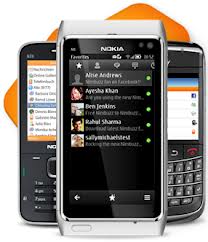Free messaging apps are a dime a dozen these days. There’s everything from Viber, to Skype, to WhatsApp to GroupMe. But while these startups concentrated on smartphone apps, it has been in the emerging markets that messaging over data has made a huge impression, and that has required paying attention to feature phones which use Java apps. We saw Saya.im appear only last year in Africa for instance. So starting way back in 2006, this is exactly what Nimbuzz, a startup originally from the Netherlands, did. And that strategy is paying off. Today it announces that it has just passed 150 million users globally and is doubling its users year on year.
Indeed, the growth is such that AC Nielsen now thinks Nimbuzz is putting the heat on Facebook messenger in Asia and especially in India, according to the latest Nielsen India Rankings. These put Nimbuzz into the top 4 consumer brands in India, ahead of Facebook Messenger, YouTube and Gmail amongst others.
The trajectory has been quick. Nimbuzz says it reached 50 million users in August 2011 and 100 million in August 2012, thus doubling its user base every year. It’s strongest in Asia, mainly India and Saudi Arabia. In India it is used by twenty-five million users, or a quarter of the entire mobile Internet population of the country. That also translates into over 1 billion minutes of calls made per month and more than 102 billion messages sent and received on Nimbuzz per month.
For the stats heads amongst you here they are:
• More than 150 million users in 200 countries: Asia (78 million including middle east); Africa (16); Europe (10); USA (9)
• 100-percent year-over-year growth
• More than 5,000 devices supported
• More than 1 billion minutes of Nimbuzz P2P, NimbuzzOut and SIP calls made per month
• More than 102 billion messages sent and received per month
• Android devices account for more than 35% of all active and new users
But Nimbuzz is not just mobile messaging, but also includes calling and entertainment via its smartphone apps which pull in their party messaging services. This means you can add, say, a horoscope chat app which you can interrogate rather like a text-based Siri. Brands also interact with users in a chat format. So developers have started developing games like Hangman for instance or an app called “Stranger Buddy” which is like Chat Roulette in text form. These are hugely popular in regions where text messaging works where data is thin.
Nimbuzz is available on all major platforms such as BlackBerry 10, Android, iOS, Symbian, Windows Phone, and J2ME, as well as Windows and Mac computers. It’s pre-loaded onto all local OEM handsets in India apart from Nokia, Samsung, LG.
Nimbuzz started in 2006 and came out of beta in 2008. It created an India office in 2008, but quickly became a full-blown Indian company.
Nimbuzz CEO Vikas Saxena says the appeal of Nimbuzz to users in thesemarkets is that it is as a “single platform capable of handling immense amounts of data for little or no cost at all.”
The company has produced an info graphic, but as TechCrunch is not fans of these, please just take it with a pinch of salt.
It’s investors include Mangrove and Naspers.

